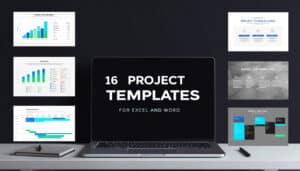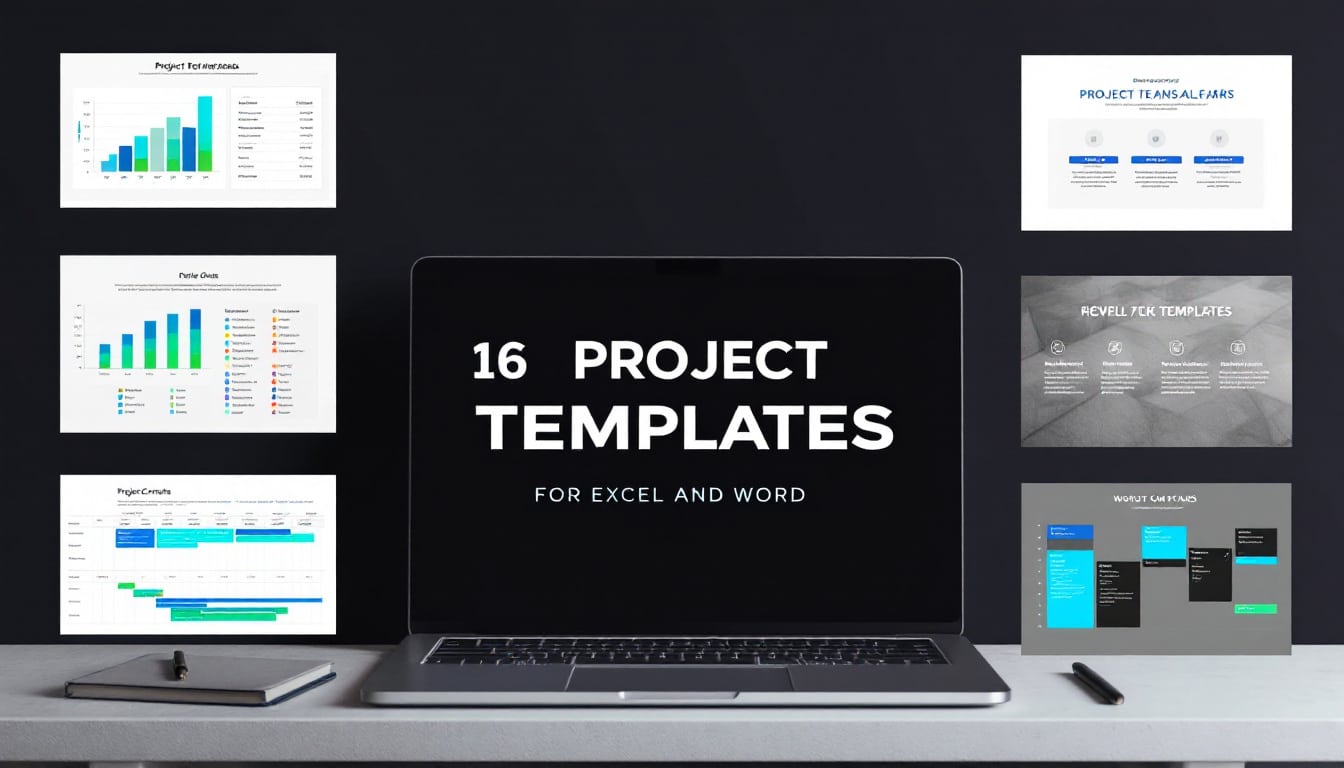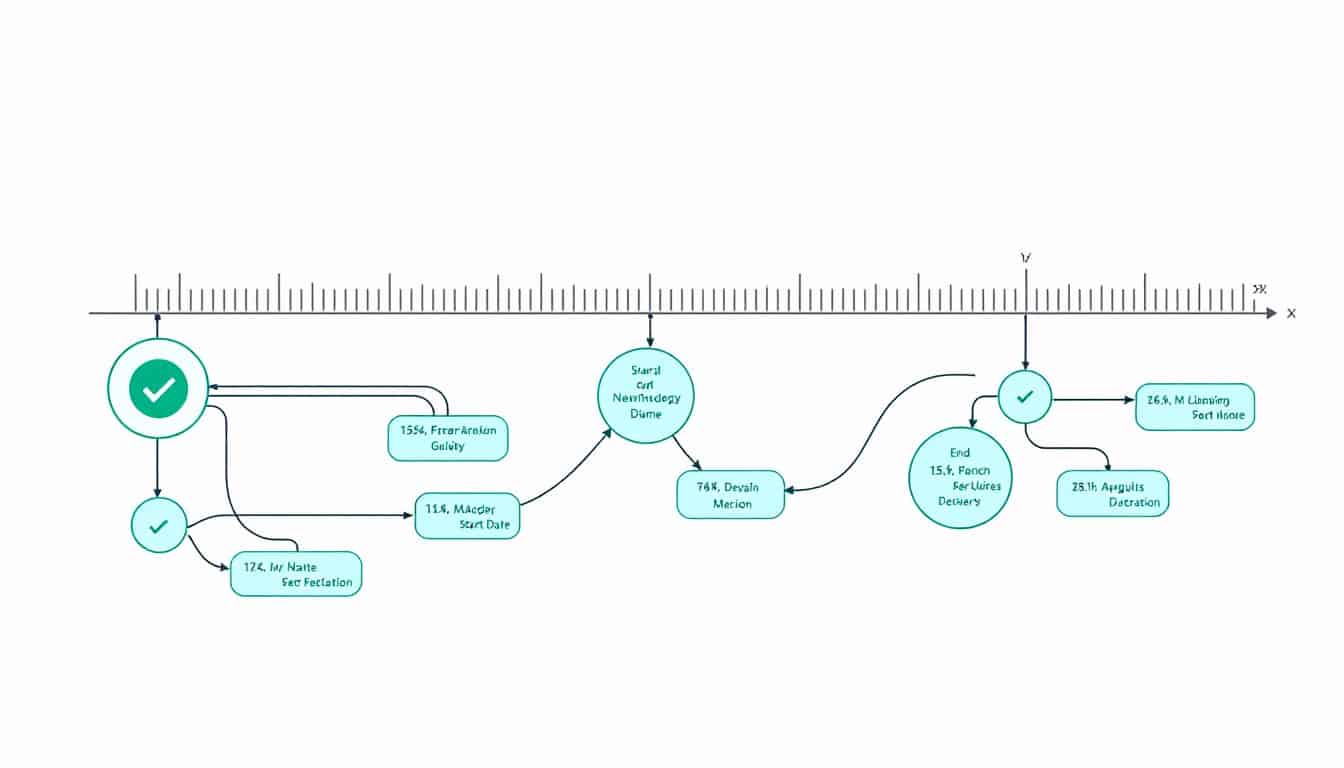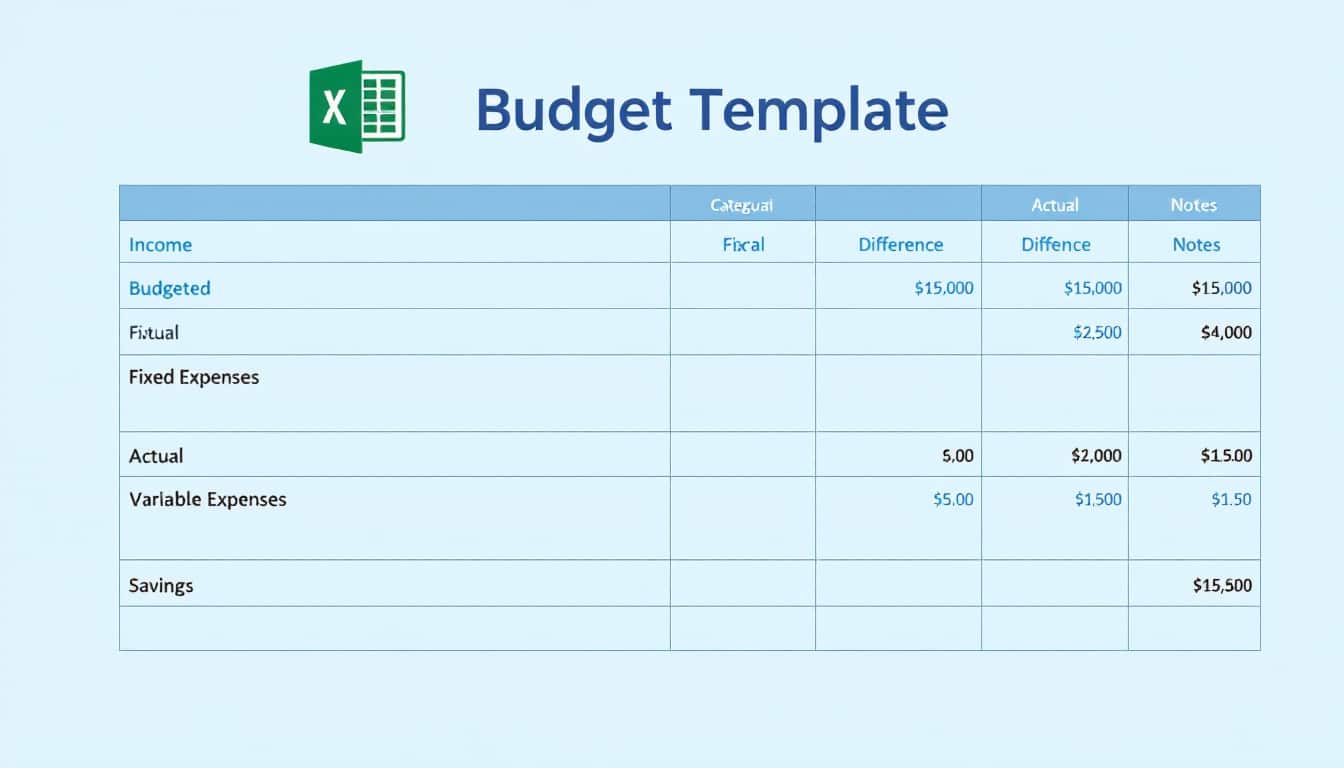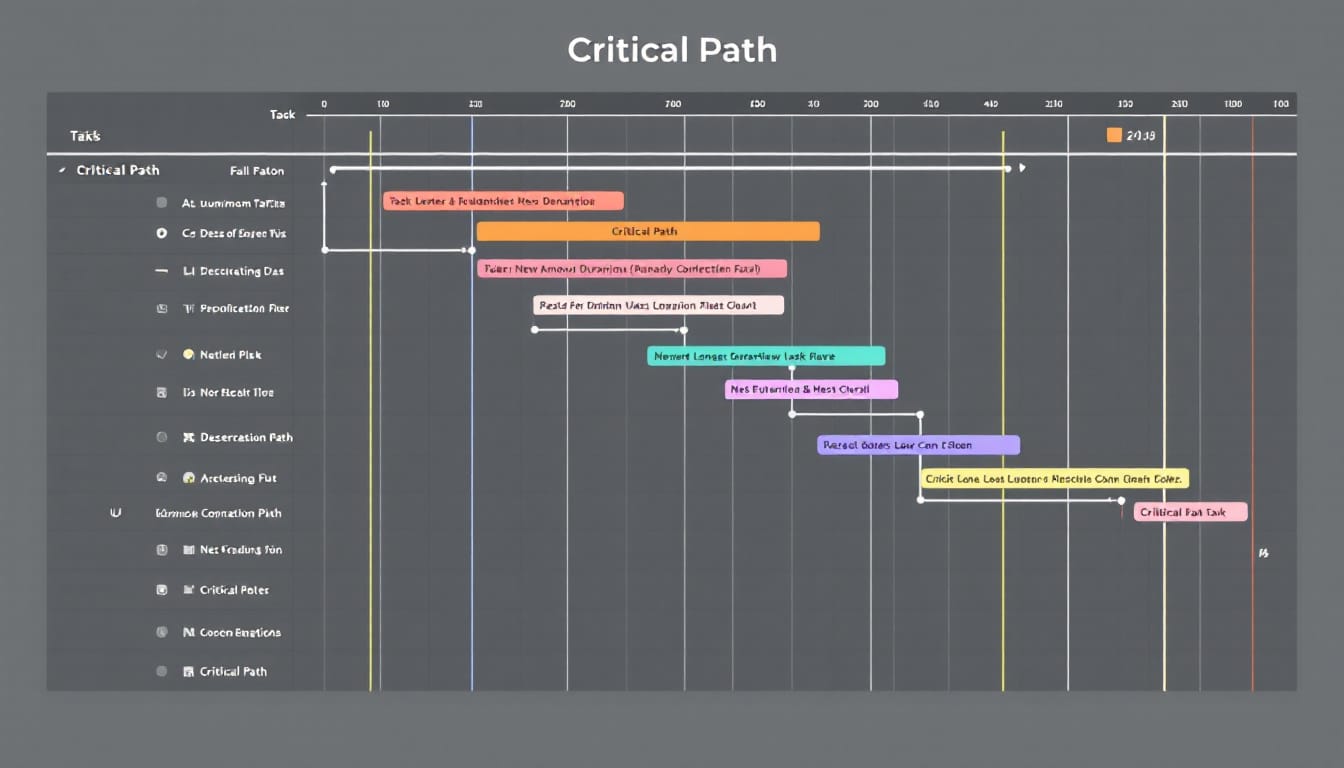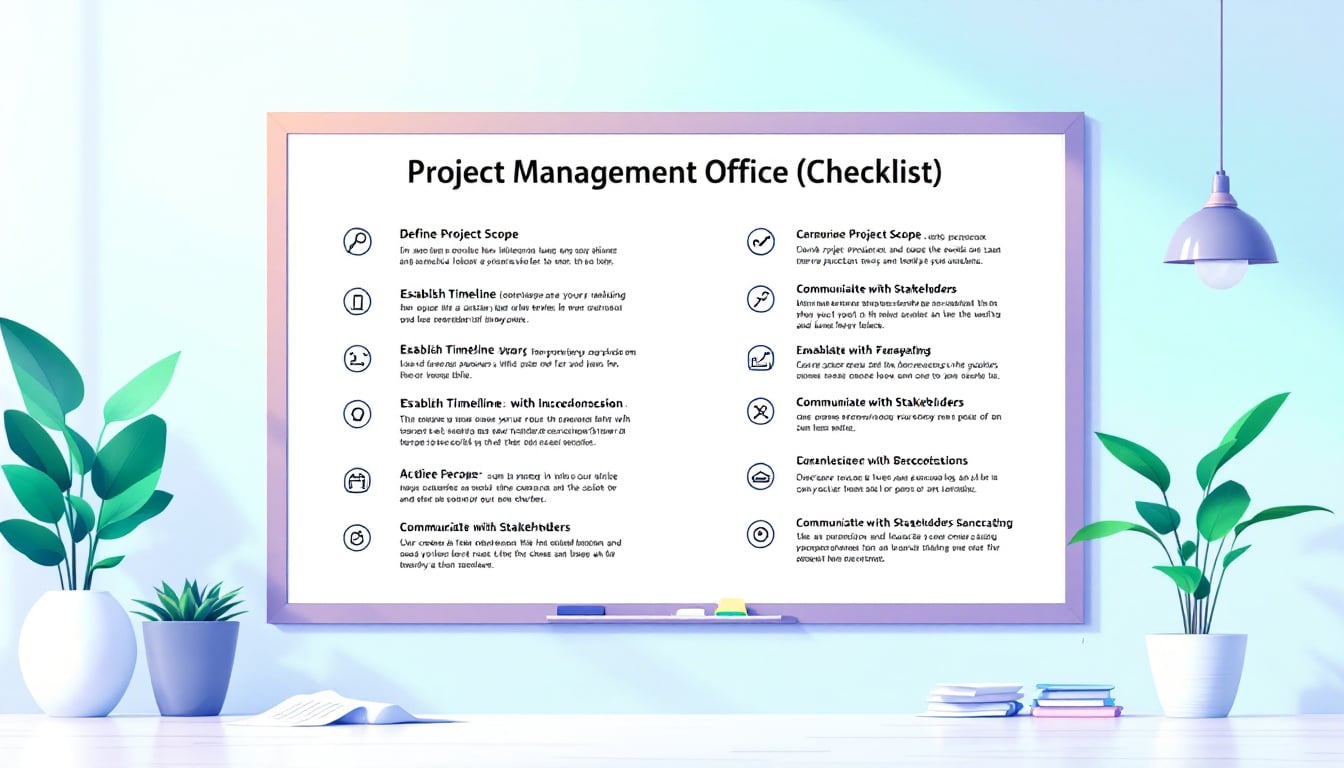Managing costs in a construction project can be decisive for its success.
An effective control of expenses ensures adherence to the budget and protects profit margins.
In the construction field, anticipating and controlling costs is essential.
Cost management goes far beyond mere expense tracking; it requires detailed planning, accurate estimation, and constant monitoring throughout the project. By mastering these elements, contractors can optimize their resources and ensure the quality of their outcomes. Adopting a proactive approach also allows anticipating unforeseen events and minimizing financial risks. With specialized tools like ProjectManager, it is possible to monitor budgets in real-time and adjust strategies accordingly. This financial mastery contributes not only to the success of individual projects but also strengthens the reputation of companies in the sector. Ultimately, effective cost management is essential for any construction company looking to thrive.
🔥 Nous recommandons Ideamap
Ideamap est l’outil idéal pour un brainstorming ou un projet collaboratif. Grâce son interface facile et à ses fonctions IA, Ideamap booste votre créativité tout en favorisant une meilleure organisation de vos idées pour atteindre vos objectifs.

Why cost management is crucial in construction
In the construction sector, cost management plays a key role in the success of a project. Construction costs are not limited to purchasing materials or paying workers. They also encompass elements such as subcontractor fees, permits, and even unforeseen circumstances related to weather conditions or design changes. Poor cost management can quickly lead to budget overruns, directly affecting the profit margins of the contractor.
Furthermore, adhering to the budget helps enhance the company’s reputation in the industry. Clients prefer to collaborate with general contractors capable of controlling their expenses and delivering projects on time. Effective cost management also ensures the quality and safety of the site, ensuring that resources are used optimally.
To successfully navigate the financial complexities of construction projects, it is essential to adopt robust cost management strategies. This includes careful planning, using appropriate software, and implementing regular controls. By optimizing cost management, construction companies can not only avoid financial losses but also improve their competitiveness in the market.
How to define cost management in construction
Cost management in construction is a systematic process aimed at ensuring that a project’s expenses remain aligned with the established budget. This involves detailed planning, accurate cost estimation, and rigorous monitoring throughout the project’s lifecycle. The primary objective is to prevent budget overruns and maximize profitability.
At the heart of cost management lies the ability to anticipate expenses and identify areas where savings can be made without compromising quality or safety. This management begins in the planning and design phase, where every financial aspect is meticulously examined. Tools like project management software can facilitate this task by providing a clear and interactive overview of planned and actual expenses.
Effective cost management does not simply involve monitoring current expenditures; it also entails proactive analysis of financial trends and constant adaptation to project changes. This requires close collaboration among various stakeholders, including architects, engineers, and subcontractors, to ensure that everyone understands and respects budget constraints.
What are the types of costs in construction
Construction costs can be categorized into two major types: direct costs and indirect costs. Direct costs are those that are directly related to the execution of work, such as materials and labor. For instance, the purchase of concrete, wood, or steel constitutes essential direct costs for any construction project.
In contrast, indirect costs are not directly attributable to construction tasks but are nonetheless essential for the project’s smooth operation. These include architectural fees, building permits, and administrative expenses. Although less visible, these costs must be carefully managed to prevent them from affecting the overall budget.
Additionally, it is important to consider unforeseen expenses, often referred to as contingencies. These reserved funds allow for handling unexpected situations, such as delays due to weather or design changes during the project. Good cost management involves not only monitoring current expenses but also the ability to adjust the budget according to emerging needs.
For optimal management, it is recommended to use cost management software that allows for categorizing and tracking these various expenses in detail. This helps project managers have a clear and precise view of the resources used and the project’s finances.
What is the step-by-step approach for cost management
Cost management in construction follows a series of structured steps aimed at ensuring rigorous budget control. The first step is to create a cost breakdown structure (CBS), which helps identify and categorize all anticipated expenditures throughout the project. This breakdown provides a detailed view of costs by task, thus facilitating thorough and precise analysis.
Once the CBS is in place, the next step is cost estimation. This phase involves forecasting expenses for each element of the project, using techniques such as analogous estimation, parametric estimation, or based on actual costs. An accurate estimation is crucial to avoid financial surprises and ensure that the budget is realistic.
After estimation, the creation of a construction budget is essential. This budget consolidates all cost estimates and includes a provision for contingencies. It serves as a reference throughout the project, allowing for comparison of actual expenses with initial forecasts.
The next step is to define a cost baseline, which serves as a reference point for measuring variations between planned costs and actual costs. This baseline allows for quick identification of budget overruns and initiation of corrective actions if necessary.
Finally, monitoring and controlling costs during the project’s execution is essential. This involves using project management software to monitor expenditures in real-time, adjust resources, and manage changes to keep the project financially on track.
What tools to use for optimizing cost management
For effective cost management, using the right project management tools is essential. Solutions like ProjectManager offer advanced features for planning, tracking, and analyzing expenses in real-time. These tools allow project managers to visualize planned costs versus actual costs, thus facilitating quick detection of budget variances.
Moreover, cost management software often integrates powerful Gantt charts that help in planning tasks and resources effectively. These charts provide an overview of the project, enabling tracking of progress and reallocating resources as needed to avoid budget overruns.
Furthermore, cloud-based platforms offer increased flexibility and accessibility, allowing teams to collaborate in real-time, whether from the office or the construction site. This enhanced collaboration ensures that all stakeholders have access to the most up-to-date financial information, facilitating quicker and more informed decision-making.
It is also recommended to use performance analysis tools, such as those outlined in key performance indicators, to evaluate the effectiveness of cost management strategies and identify areas for improvement. By integrating these tools into the daily workflow, construction companies can not only monitor costs more accurately but also optimize their processes for better profitability.
How to control costs during the project
Controlling costs during the project is a crucial step to ensure budget adherence and project success. This starts by establishing a cost baseline, which serves as a reference for comparing actual expenses to initial estimates. With this baseline, it is possible to quickly identify variances and take corrective measures before they become problematic.
The use of project management software like ProjectManager enables tracking costs in real-time through interactive dashboards. These dashboards provide an overview of current expenditures, future forecasts, and performance against financial goals. By integrating cost tracking tools, managers can monitor daily expenses and adjust resources accordingly.
Moreover, tracking cost variances is essential to identify negative trends or opportunities for savings. This involves regular analysis of expenses relative to the budget and assessing the impact of changes on overall costs. For example, an increase in material costs may require revising planned quantities or seeking alternative suppliers to maintain the budget.
In parallel, it is important to manage changes to the construction plan. Changes, whether due to client requests or unforeseen constraints, can significantly impact costs. By establishing a clear change management policy, including approval and tracking processes, companies can minimize negative financial impacts and ensure that changes are integrated in a controlled and effective manner.
Finally, cost control involves constant communication with all stakeholders. By regularly sharing financial reports and updates on the state of expenditures, project managers can ensure that everyone is aligned with budgetary goals and can react quickly in case of deviations. Proactive cost management contributes not only to maintaining the budget but also to strengthening trust and transparency between teams and clients.
How to use project management software to optimize costs
Integrating a project management software is an essential step for optimizing cost management in the construction sector. Platforms like ProjectManager offer a multitude of features that facilitate tracking and controlling expenses throughout the project. By using these tools, managers can centralize all financial information, improve the accuracy of estimates, and automate tracking processes.
One of the main advantages of project management software is the capability to effectively create and manage cost breakdown structures (CBS). With these software, it is possible to detail each cost element, from labor to materials, and organize them hierarchically. This allows for finer analysis and better visibility on expenditure distribution, thus facilitating informed decision-making.
Moreover, project management software allows for establishing detailed budgets and tracking costs in real time. Managers can compare planned costs to actual costs, identify variances, and adjust resources accordingly. This feature is particularly useful for quickly detecting budget overruns and taking corrective measures before they seriously affect the project.
In addition, the real-time collaboration tools integrated into this software facilitate communication among various teams and stakeholders. Architects, engineers, and subcontractors can share information, files, and updates in real time, ensuring that everyone has the most recent data to make informed decisions. This enhanced collaboration helps minimize errors and improve overall project efficiency.
Finally, using interactive dashboards and customizable reports allows managers to track key performance indicators (KPIs) related to costs. These tools provide clear visibility into the project’s financial state, helping to identify trends and anticipate potential challenges. To learn more about the best available tools, you can check this quick guide on project management software.
How to anticipate and manage financial unforeseen events
In any construction project, financial unforeseen events are inevitable. Whether due to unfavorable weather conditions, delays in material delivery, or client-requested modifications, these contingencies can significantly impact the budget. To anticipate and manage these unforeseen events, it is important to have robust strategies and adequate financial reserves.
The first step is to allocate a contingency in the initial budget. A contingency is an amount of money specifically set aside to cover unforeseen expenses. Typically, it represents a percentage of the total project cost, adjusted according to the project’s complexity and size. A good practice is to integrate this contingency early in the planning phase, rather than adding it at the end of the budget, to avoid any temptation to use it prematurely.
Next, it is crucial to continuously monitor costs throughout the project. Using project management software allows for tracking expenditures in real time and quickly identifying deviations from the planned budget. This vigilance enables prompt action in case of overruns, by reallocating resources or adjusting priorities to minimize financial impact.
In addition, proactive change management is essential. Any scope or design change must follow a strict validation and budgeting process. This includes documenting changes, obtaining approval from stakeholders, and adjusting the budget accordingly. By establishing a clear change management policy, projects can better control additional costs and avoid financial surprises.
Finally, a transparent communication with all stakeholders is indispensable. Regularly sharing financial reports and budget updates helps keep everyone informed and aligned on the project’s financial goals. This transparency also fosters collaboration and informed decision-making, thus reducing the risks of misunderstandings and financial conflicts.
To delve deeper into these strategies and discover the fundamentals of financial management in professional services, you can visit this guide on the fundamentals of professional services industry.
[GESTION DES COÛTS] – Energie : les entreprises au bord de l’implosion
— Option Finance (@Option_Finance) September 19, 2022
▶️ https://t.co/0cyXu5n6JI




